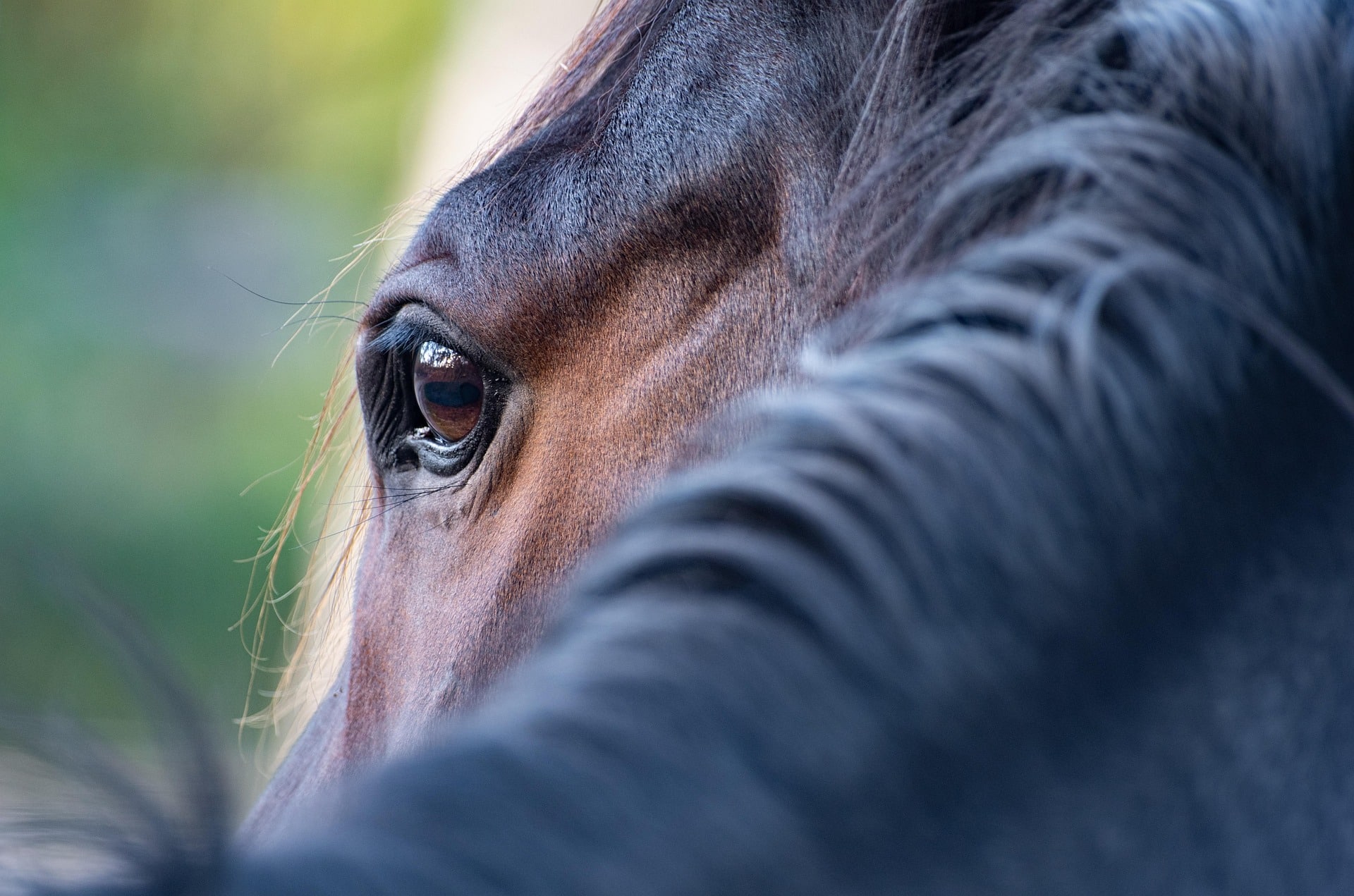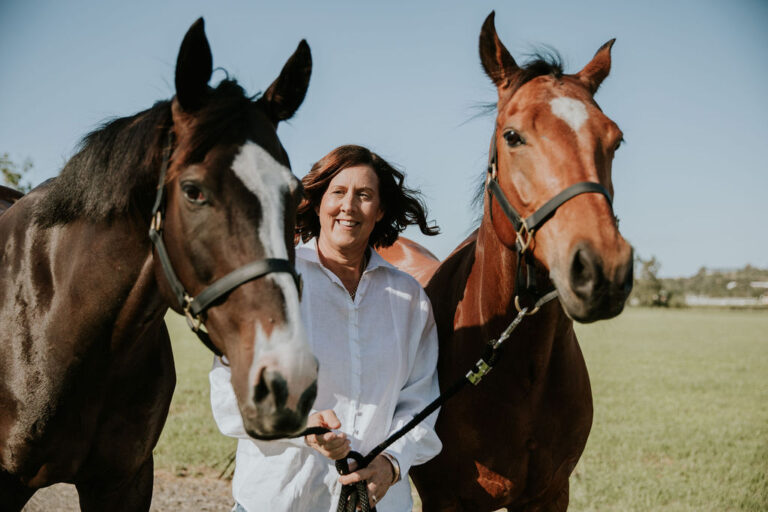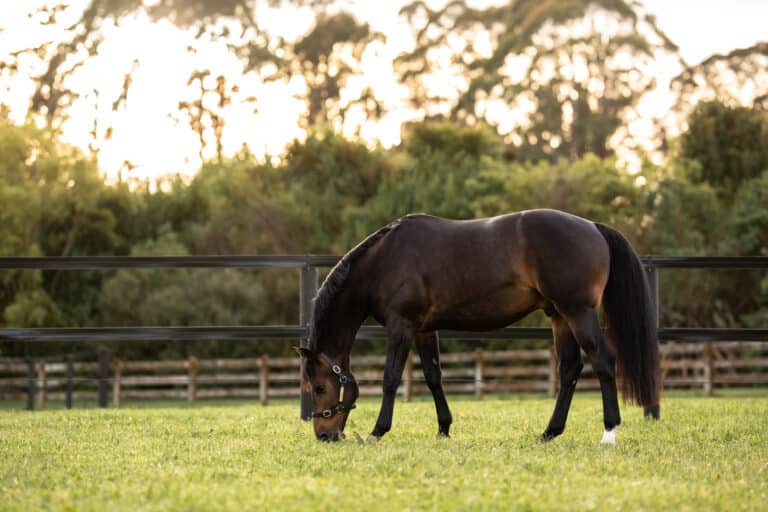The Australian Veterinary Association (AVA) has advised veterinarians and horse owners to remain vigilant following the recent detection of equine herpesvirus type 1 (EHV-1) in multiple horses across two locations in Queensland.
“Biosecurity Queensland has confirmed detections of EHV-1 in one horse with neurological signs in the Townsville region and up to three horses with abortions on a single property in the Toowoomba region,” said the AVA via a media release on 8 August.
Symptoms are usually mild
Endemic to Australia, EHV-1 is a highly contagious viral disease in horses and commonly causes mild respiratory disease, occasionally abortion and very rarely, neurological signs.
“Infection in young horses usually presents as an acute febrile respiratory illness that can spread rapidly. Signs include fever (39-40.5oC), conjunctivitis, depression, nasal discharge and a cough, lack of appetite, and possible swelling of the lymph nodes around the throat,” explains QLD Chief Veterinary Officer Dr Fiona Thompson.
“Abortion in horses due to EHV-1 usually occurs between 8-10 months’ gestation and, occasionally, as early as 4-5 months’ gestation. Abortions occur anywhere from 10 days to 12 weeks after virus infection. The mare may not show signs of respiratory infection prior to aborting.
“Horses with neurological disease caused by EHV-1 infection can show signs including fever, ataxia, weakness, trouble standing, dog sitting (rear limbs often more severely affected than forelimbs), difficulty urinating (urinary overflow, dripping urine), difficulty defaecating, decreased tail tone, decreased perineal sensitivity, and rarely, extreme lethargy and a coma-like state.”
Not all horses with EHV-1 are symptomatic
Subclinical infections, where a disease is not severe enough to present definite or readily observable symptoms, are common with EHV-1 – even in young animals.
“After initial infection, the virus goes into a latent or dormant state, persisting at low levels in the white blood cells and the trigeminal ganglia neurons without causing clinical disease or spread of infection to other horses. Most adult horses have latent EHV infections,” explains Dr Thompson. A latent infection is where a virus is present in the body but not actively replicating or causing symptoms.
“Although horses with latent infection do not show clinical signs and do not spread the infection to other horses, reactivation (recrudescence) of infections may occur with stress or immune system compromise, resulting in viral shedding from the upper respiratory tract. During this time, the virus can be spread to other horses.”
Humans are not at risk, but owners should be mindful of Hendra
The AVA notes that humans are not at risk of EHV-1 infection however, other diseases that are transmissible to people such as Hendra virus could present with similar clinical signs.
“If any horse owners suspect their animals may be infected or are presenting symptoms, they are strongly encouraged to isolate their horse and contact their treating veterinarian immediately,” explains Equine Veterinarians Australia President, Dr Albert Sole Guitart.
Diagnosing EHV-1
Laboratory testing is required to diagnose infection with EHV-1. “Tests that may be used include PCR, virus isolation, serology and histopathology,” explains Dr Thompson. “Appropriate specimens include nasal swabs, whole blood (EDTA tube) and serum (red top tube), and in the case of abortions, foetal and placental tissues. In horses with neurological signs, CSF (antemortem) or brain and spinal cord (post-mortem) should be submitted. Serology requires an acute and convalescent titre; ideally 2-4 weeks apart.”
“Random testing for EHV-1, particularly without the presence of clinical signs, is not advised. Only horses in the acute stage of clinical disease should be tested. Confirmation of an EHV-1 diagnosis may be complicated as the horse may have been previously infected. If samples obtained initially do not provide the answer, follow-up serological testing may be useful and help eliminate other differential diagnoses.”
Treating EHV-1
“The disease is highly contagious and spreads easily by direct horse-to-horse contact or by contaminated equipment (e.g. feed, water buckets or tack),” explains Dr Thompson. “Infection of EHV-1 occurs mainly by inhalation, but also by mucosal contact with material contaminated by nasal discharge or aborted foetuses.”
Horses with suspected or confirmed EHV-1 infection should be isolated immediately.
“Strict biosecurity and hygiene practices should be followed to prevent spread of infection. Owners of other horses that are at risk should be advised to closely monitor their animals,” notes Dr Thompson.
“There is no specific treatment for EHV-1 in horses, however supportive care should be provided according to the signs observed and advice from equine medicine specialists may be useful to manage neurological cases.
“Reducing the ongoing risks of EHV-1 respiratory infections and abortions include vaccination, minimising stress (especially for pregnant mares) and isolation of new horses for at least 14 days.”
Review biosecurity protocols
The AVA advises horse owners to review their biosecurity protocols, limit horse movements, and consult their veterinarians about vaccination options: “Biosecurity Queensland is coordinating with veterinarians and industry stakeholders to monitor the situation and provide guidance on containment and prevention strategies.”
Internationally, EHV-1 has caused widespread issues in the past. “Overseas there have been multiple EHV-1 neurological outbreaks, causing significant impacts to the horse industry including numerous horse deaths, widespread cancellation of events and heightened biosecurity measures to contain the virus,” says Dr Thompson. “It is vital that any cases where EHV-1 is detected in horses with neurological signs are managed with heightened biosecurity including isolation and management of fomites and human-assisted spread.”
Veterinarians are the first responders in these cases, and as Australian Veterinary Association President Dr Gemma Chuck explains, they play a critical role in maintaining Australia’s high standard of biosecurity: “Vets work closely with affected communities and authorities to ensure the impact of diseases such as EHV-1 is reduced. They also play an essential role in prevention strategies and horse owners are encouraged to contact their veterinarian for vaccination advice.”
Authorities are urging horse owners and equine facility managers to immediately report any suspected cases to Biosecurity Queensland on 13 25 23 or via the Emergency Disease Hotline at 1800 675 888. Prompt isolation of affected animals and strict biosecurity measures are essential to prevent further spread.
For more information visit: Equine herpesvirus type 1 (EHV-1) | Business Queensland.
Source: Australian Veterinary Association (AVA) media release / article on EHV-1 produced by AVA and QLD Chief Veterinary Officer Dr Fiona Thompson.








